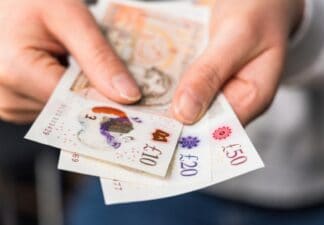Barratt Developments (LSE: BDEV) is the largest holding of several housbuilders in Neil Woodford’s portfolios. As of 31 December, it ranked at number six in his flagship Equity Income fund, with a weighting of 2.8%, and at number eight in his Income Focus fund, with a 2.9% weighting.
He built his stake in Barratt during 2017, as part of a broad repositioning of his funds to capture what he sees as “a contrarian opportunity that has emerged in domestic cyclical companies where valuations are too low and future growth expectations far too modest.”
During October, he sold his holding of mid-cap international insurer Lancashire (LSE: LRE) to further increase his stake in Barratt and a number of other UK-focused FTSE 100 stocks. I’m not convinced that selling Lancashire, which announced its annual results today, was a good move. At the same time, I reckon buying Barratt is fraught with danger.
Lots of positives
The UK’s largest housbuilder is set to release its interim results for the six months ended 31 December next Wednesday. They’re going to be good because the company told us in January that it had “delivered a strong performance in the first half.”
In the same update, Barratt pointed to a string of positive features for the business, including good mortgage availability, a supportive Government policy environment, attractive land opportunities and its “healthy forward order book.” And the board reiterated its commitment to pay a £175m special dividend for the year.
At a current share price of 550p (over 20% down from last year’s post-financial-crisis high of above 700p), Barratt trades on just 8.5 times forecast earnings, while the forecast dividend (ordinary plus special) gives a yield of 7.9%. What’s not to like?
Downside risk
I have several concerns. Housebuilders have enjoyed a terrific bull run since the financial crisis, but this a notoriously cyclical boom-and-bust industry. Housing fundamentals may look good currently and the earnings multiple and dividend yield may scream ‘bargain’ but things can change quickly and other metrics — price-to-book and margins — suggest we’re at or near the peak of the cycle.
And with government stimulus measures also at full throttle and rising scepticism about their effectiveness, I believe risk has turned very much to the downside. As such, I’m inclined to rate Barratt a ‘sell’.
Dealing with catastrophe
Insurance is also a cyclical business and as Lancashire’s results today revealed, 2017 was a bad year for catastrophe losses, with hurricanes and wildfires taking a heavy toll. The company posted a $71m loss compared with a $154m profit in 2016.
However, managing such extreme years is all part of the business. While a loss is never welcome, the company was pleased that its risk management model passed this “real-time ‘stress test’.” In fact, Lancashire is a consistently well-managed business and has returned almost all of its profits to investors via dividends since becoming a public company. The annualised total return over the past 10 years is an impressive 16%, compared with 6% for the FTSE 100.
There was no special dividend for 2017, with shareholders having to settle for the modest regular ordinary dividend of $0.15 (10.6p at current exchange rates). The shares are almost 7% down on the day at 610p but the City expects a rebound in earnings and dividends in 2018. The forward P/E is 13, the prospective yield is 6.2% and I rate the stock a ‘buy’.






